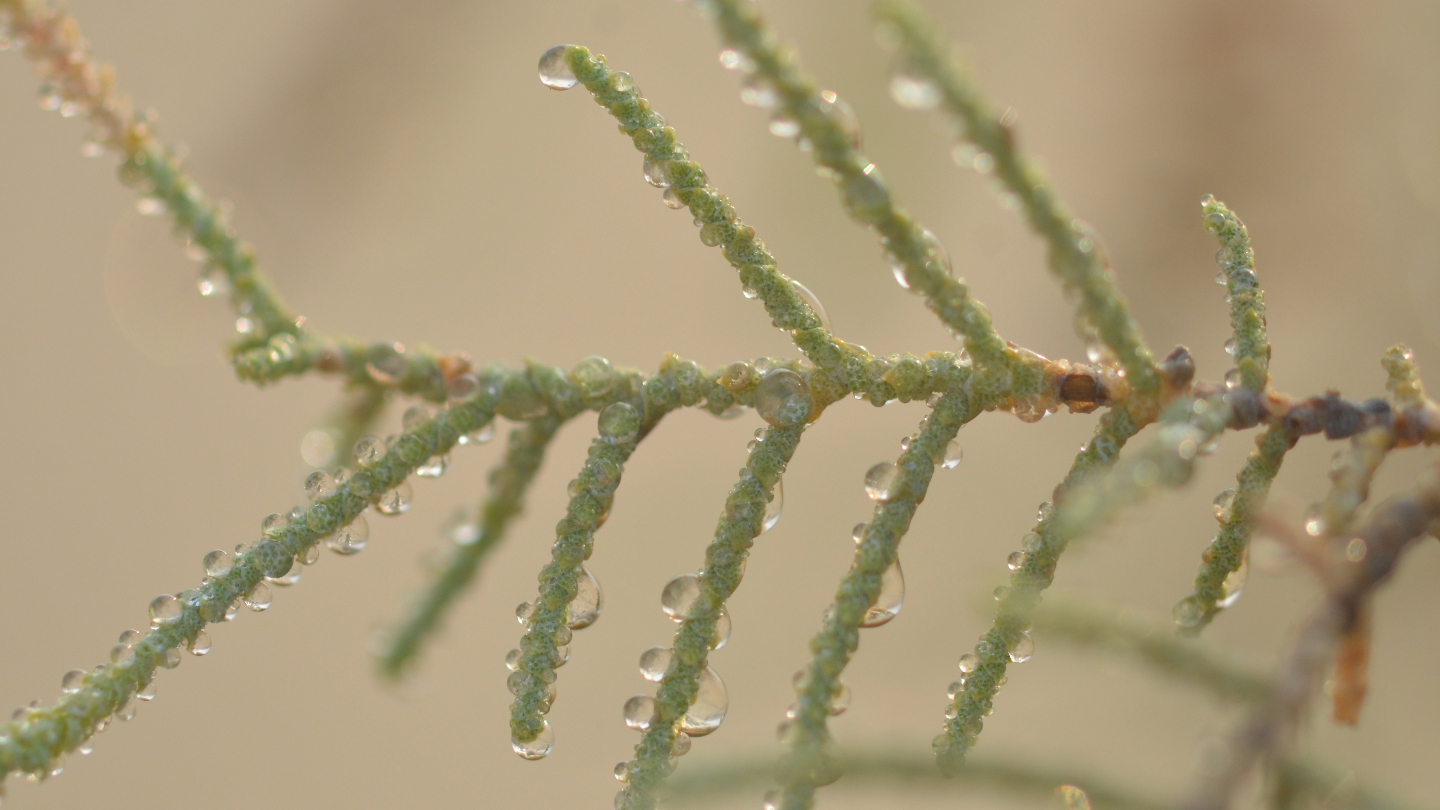Sweat keeps some animals cool in scorching heat. Salty secretions also serve one desert shrub a refreshing sip of water.
The Athel tamarisk (Tamarix aphylla) thrives in the arid, salt-rich soils of coastal flats across the Middle East. That’s because the tamarisk is a halophyte, a type of plant that secretes excess salt in concentrated droplets from glands in its leaves. The moisture from these briny excretions dissipates in the heat of the day, leaving the tamarisk encrusted in white crystals that shake off in the wind.
While driving through the hot, humid deserts of the United Arab Emirates, materials scientist Marieh Al-Handawi of New York University Abu Dhabi noticed water condensing on these crystals. There are lots of plants with leaf structures adapted to attract liquid water from fog. But Al-Handawi, who looks to nature for strategies to tackle water scarcity, suspected that the chemical composition of the excreted salts might have something to do with the dew.
To investigate, Al-Handawi and her team recorded time-lapse videos of Athel tamarisk plants in their natural habitat. These recordings showed that salt crystals that form from daytime excretions swell with water at night. Back in the lab, the researchers found that at 35° Celsius and 80 percent relative humidity, a naturally encrusted branch collected 15 milligrams of water on its leaves after two hours, while a washed branch yielded only about one-tenth as much.
2023-10-30 15:39:47
Link from www.sciencenews.org





















